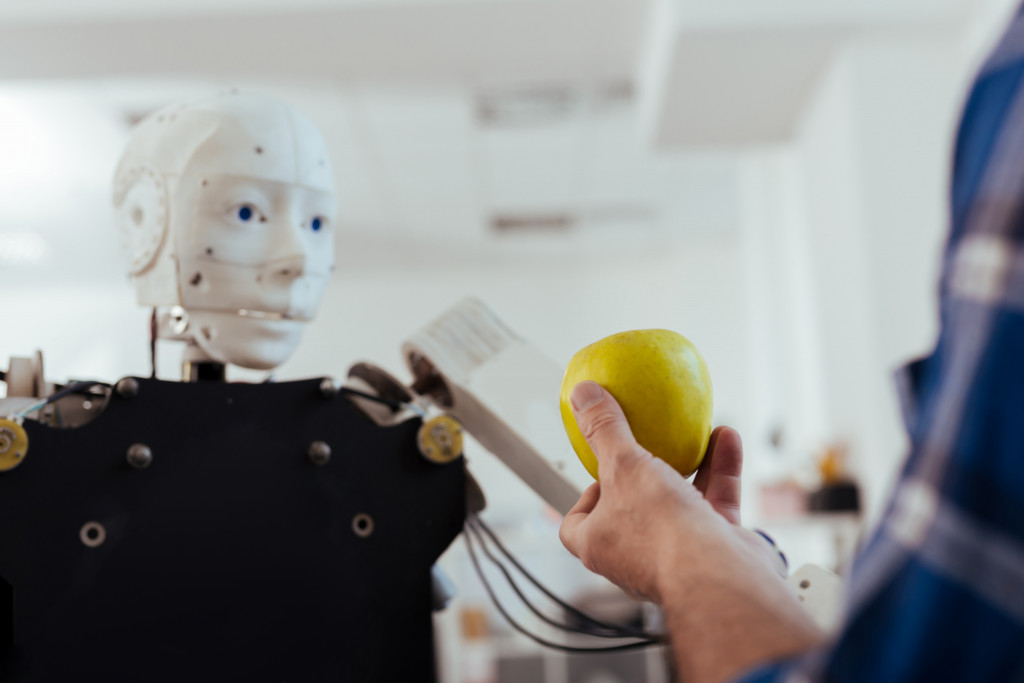3D and robotic technology have made significant advances in the field of medicine. From assisting with surgeries to helping patients recover from injuries, they play an essential role in the medical field. Here are just a few examples of how 3D and robotic technologies are used in medicine today.
The 3D Scan and 3D-Printed Guide for Tooth Implant Procedures
3D scanning and 3D printing enhanced the precision and safety of tooth implant procedures. The dentist scans the patient’s mouth, enabling him to map the individual structure. This ensures that sinuses and nerves are not harmed.
The 3D scan also provides exact individualized information on the size of the implant and the depth of the implantation. The dentist then uses the scan to make a 3D-printed guide for the tooth implant procedure.
The 3D guide perfectly fits over the patient’s other teeth and leaves a hole precisely where the implant should go. This makes the procedure more accurate, easy, and safer.
The Yomi Robotic Dental System
Neocis, a startup healthcare company, developed the YOMI robotic dental system. In 2016, it was cleared by the U.S. Food and Drug Administration for general dental implant procedures. By 2020, it was cleared for full-arch dental implant procedures. It was the first and is still the only FDA-approved robot assistant for dental surgery.
The Yomi software helps dentists in the pre-operative planning stage. Utilizing CT scans or CBCT images and special software, the surgeon can generate a three-dimensional virtual model of the patient’s anatomy.
This allows for the development of an individualized treatment plan taking into account both the position and angle of the implants and any surrounding anatomical structures.
During the intra-operative phase of the surgery, the Yomi system provides real-time navigational haptic guidance to the surgeon and the surgical instruments. This enables more precise and accurate placement of implants, which can improve patient outcomes. In addition, Yomi can ;;help reduce surgical time, blood loss, and potential complications such as infection.
As a result, Yomi is changing the landscape of dental implant surgery and providing patients with a safer, more effective treatment option.
In 2021, the New York University (NYU) College of Dentistry was the third dental school in the U.S. to obtain the Yomi surgical robot assistant. It has two robots for use by its pre-doctoral and postdoctoral classes. With these, students can master robotic assistive technology in clinical practice.
In February 2022, a dentist from Flagstaff, Arizona, used the Yomi robotic assistant to successfully do a dental implant on himself. He had two human assistants with him.

Stevie, the Robotic Companion and Health Monitor for ElderCare
In 2019, Trinity College Dublin’s Robotics and Innovation Lab brought the socially assistive robot called Stevie to the Knollwood Military Retirement Community in Washington, D.C. It was a test run and an opportunity for the engineers to learn what additional functions the residents would need from the robot.
Stevie was designed to engage with the elderly socially and succeeded. Being programmed to respond to questions with appropriate empathy and even able to tell jokes, it was an instant favorite. Residents enjoyed interacting with it, saying it made them smile and laugh. They told it stories.
Stevie was also designed with a face that could transform into a screen. A resident could communicate with a doctor or any member of the staff. The robot also recognizes the words “help me” and could get the needed assistance immediately.
The plan was to bring Stevie to other elderly care facilities to gather more data and build an updated version. The pandemic has delayed this, but the engineering team intends to continue with the project.
Zora Bots for the Elderly and Children with Autism
Since 2016, the 22-inch Zora bot has already engaged with elderly residents of assisted care facilities and children with autism in special schools. There are now more than 200 Zora bots, mainly in Europe and spread around the world.
Among the elderly, Zora reads out loud local news, weather forecasts, and TV programs. It also leads the residents in dance and exercise classes. Among children with autism, the Zora bot ;;enhances socialization.
TUG Robotic Medical Delivery Carts in Hospitals
The TUG robotic medical carts have been in use in hospitals in the U.S. and elsewhere in the world for more than 15 years. They carry medicines, laboratory specimens, and various materials throughout hospitals. This spares medical personnel from having to take long walks that add to their workload and take time away from patients.
TUG robotic carts are independent but have wireless connections to a central monitor. They open doors and use elevators. They have locks that keep contents safe from tampering.
During the Covid-19 epidemic, hospitals’ use of TUG robots increased by 30 percent as hospital staff was overstretched.
Technology Continues to Benefit Mankind
These are only some examples of how 3D and robotic technology continue to benefit mankind in the 21st century. It is certain that there will be many more applications for 3D and robotic technology in the future as researchers continue to explore new ways to use these amazing technologies.

